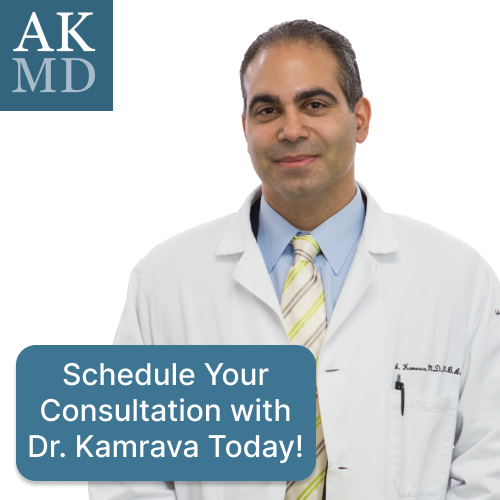Having a pilonidal cyst is quite painful and annoying. The elusive disease, which seemingly appears overnight, disrupts functioning and alters quality of life. Fortunately, pilonidal cyst excision holds the answer to recovery with the assurance of becoming pain-free. Cause, symptomatology, and amenability to treatment being known are all beneficial to most informed treatment decisions.
What creates pilonidal cysts?
They happen as hair is trapped under the skin. This is most commonly in the skin underneath the back between the two buttocks. Sitting, rubbing, or applying pressure directly over the area repetitively may deteriorate the area and make the area become inflamed and trap hair and dirt underneath the skin.
Some conditions predispose one to develop pilonidal cysts. They include coarse body hair, sweating, tight clothing, and jobs with long sitting hours. Pilonidal disease is also hereditary. Infection predisposes one to swelling, redness, and drainage due to bacterial invasion through the skin. If untreated, the cyst becomes more painful.
What are the symptoms?
Symptoms arise slowly, but all of a sudden alter in the case of infection of the cyst.
Onset is a primary nodule or dimple over the distal base of the spine. Painful, swollen, or tender soft tissue on enlargement. Purulence or bleeding with infection. Complaints of chills, fever, and nausea by the patient when it’s a flare-up on an acute basis.
Pain is increased by sitting, standing for longer than a few hours, or straining. Early treatment prevents complications and speeds recovery if you have any of these.
Why do I need pilonidal cyst surgery?
Surgical excision of pilonidal cyst is most likely to be the optimal treatment following chronic infection or recurrence of pilonidal cyst. Antibiotics or drainage may be beneficial as a temporary conservative treatment but generally will not cure the condition.
Excision pilonidal cyst eliminates the cyst and sinus tracts responsible for recurrent infection. Surgical excision offers the highest hope of cure and return to normal life. If not treated, patients may go on to develop chronic infection, abscess, and scarring.
Taking the opinion of a colorectal surgeon for surgery individualizes the surgery to your health, condition, lifestyle, and health goals.

What surgery options exist?
Pilonidal cyst surgery is diverse and best individualized based on the size, location, and extent of the cyst.
Primary closure by excision pilonidal cyst through direct wound closure is characterized by rapid healing but higher recurrence rate.
Open healing excision allows the wound to heal by itself. Due to delayed healing, the procedure reduces recurrence by a great extent. Even in recurrences or difficult ones, sometimes surgeons carry out complicated flap procedures. These procedures bring normal tissue over the wound to speed up healing and reduce pressure on the area.
Less invasive such as cleft pick or lift are newer and involve less pain and recovery. Specialist referral makes you capable of making the right choice in your case.
What is pilonidal cyst surgery preparation?
Proper preparation guarantees the best result of pilonidal cyst surgery. Begin by closely following all pre-operative instructions from your surgeon. You might need to discontinue taking some medications, not eat before surgery, or provide home transportation after pilonidal cyst excision surgery.
It is also necessary to sterilize the operative field. Even a pre-procedure antibacterial soap bath can be ordered by your physician. Shaving is usually not recommended because of possibility of skin irritation, but clipping can be recommended as an alternative whenever necessary.
It is also in your best interest to get your head prepared in a manner that you prepare yourself for the healing process. Make a comfortable place to lie down at home, prepare ahead of time in quantities soft foods and fluids, and have on hand wound care supplies that you will need. Preparing reduces stress and makes the healing process smoother.

What can I expect during recovery?
Recovery from pilonidal cyst surgery is different depending on the operation. Recovery, if the wound heals, in most cases will be two to four weeks. Recovery, if the wound does not heal, will be six weeks or more.
You will likely experience soreness and swelling in the first few days. Your doctor will likely want to order an over-the-counter drug or an analgesic. You will need to pay close attention to wound care instructions. You will likely need to dry out the area every day and clean it so that it does not catch any infection.
Activity limitation is usually necessary. Refrain from heavy exercise, sitting, and heavy lifting until the initial phase of healing has occurred. Progressively increased activity on an increasing scale as tolerated promotes healing and a return to normal mobility.
What postop complications do you need to be aware of?
Although pilonidal cyst removal will most likely be the least damaging procedure, at times complication does happen. Understanding what to anticipate will allow for timely adjustment of whatever factors affect you.
Redness, warmth, swelling, draining of pus and soreness are symptoms. Fever also can be seen. If these symptoms arise, call your surgeon immediately.
Reopening or dehiscence of the wound is also a likely complication and will most frequently happen if excessive tension is placed on the incision site. Rest and each subsequent follow-up decrease complications and healing proceeds in the normal way.
How do you prevent pilonidal cyst recurrence?
The healing of the pilonidal cyst is not done until and unless it has been ensured that recurrence is prevented. Risk can be minimized through pilonidal cyst excision surgery, but good habits can also be your protection.
The answer is good hygiene. Clean and dry the area, especially after exercising. Try not to sit for a long time on hard seats as much as possible. Sit on top of a cushion when sitting for a long time cannot be helped to avoid compression of the lower back.
It is suppressed also. Suppressing hair growth there also assists. Some patients undergo laser hair removal in order to minimize hair clogging up again. Clipping it regularly and keeping it short by trimming it with electric trimmers or clippers but not razor blades is another method.
Healthy weight and overall good health also minimize your risk of recurrence. Circulation and obesity are two conditions which are most likely to be the main reasons for cyst development, so healthy living keeps skin and tissue in the best condition.
Conclusion
Pilonidal pain can be managed with chronic pain. Knowledge about causes, symptoms, and treatment gives you the power to make healthy, informed decisions. Proper treatment, planning, and counseling enable pilonidal cyst removal to give you long-term relief, more comfort, and restored pleasures. Fear or ignorance don’t have to be what’s holding you back from healing—help is there for you to use.



